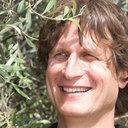Anti-diabetic activity of aerial parts of Sarcopoterium spinosum.
Açar sözlər
Mücərrəd
BACKGROUND
Sarcopoterium spinosum (S. spinosum) is used by Bedouin medicinal practitioners for the treatment of diabetes. While the anti-diabetic activity of S. spinosum root extract was validated in previous studies, the activity of aerial parts of the same plants has not been elucidated yet. The aim of this study was to clarify the glucose lowering properties of the aerial parts of the shrub.
METHODS
Anti-diabetic properties were evaluated by measuring the activity of carbohydrate digesting enzymes, glucose uptake into 3 T3-L1 adipocytes, and insulin secretion. Insulin signaling cascade was followed in L6 myotubes using Western blot and PathScan analysis.
RESULTS
Activity of α-amylase and α-glucosidase was inhibited by extracts of all S. spinosum organs. Basal and glucose-induced insulin secretion was measured in Min6 cells and found to be enhanced as well. Glucose uptake was induced by all S. spinosum extracts, with roots found to be the most effective and fruits the least. The effect of S. spinosum on Akt phosphorylation was minor compared to insulin effect. However, GSK3β and PRAS40, which are downstream elements of the insulin cascade, were found to be highly phosphorylated by S. spinosum extracts. Inhibition of PI3K and Akt, but not AMPK and ERK, abrogated the induction of glucose uptake by the aerial parts of the shrub.
CONCLUSIONS
The aerial organs of S. spinosum have anti-diabetic properties and may be used as a basis for the development of dietary supplements or to identify new agents for the treatment of type 2 diabetes.


